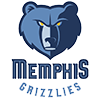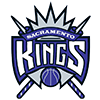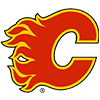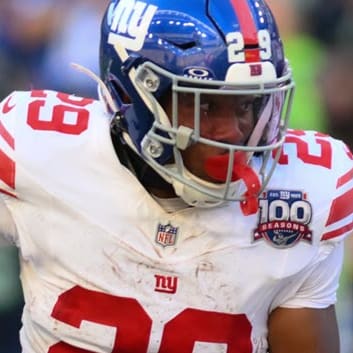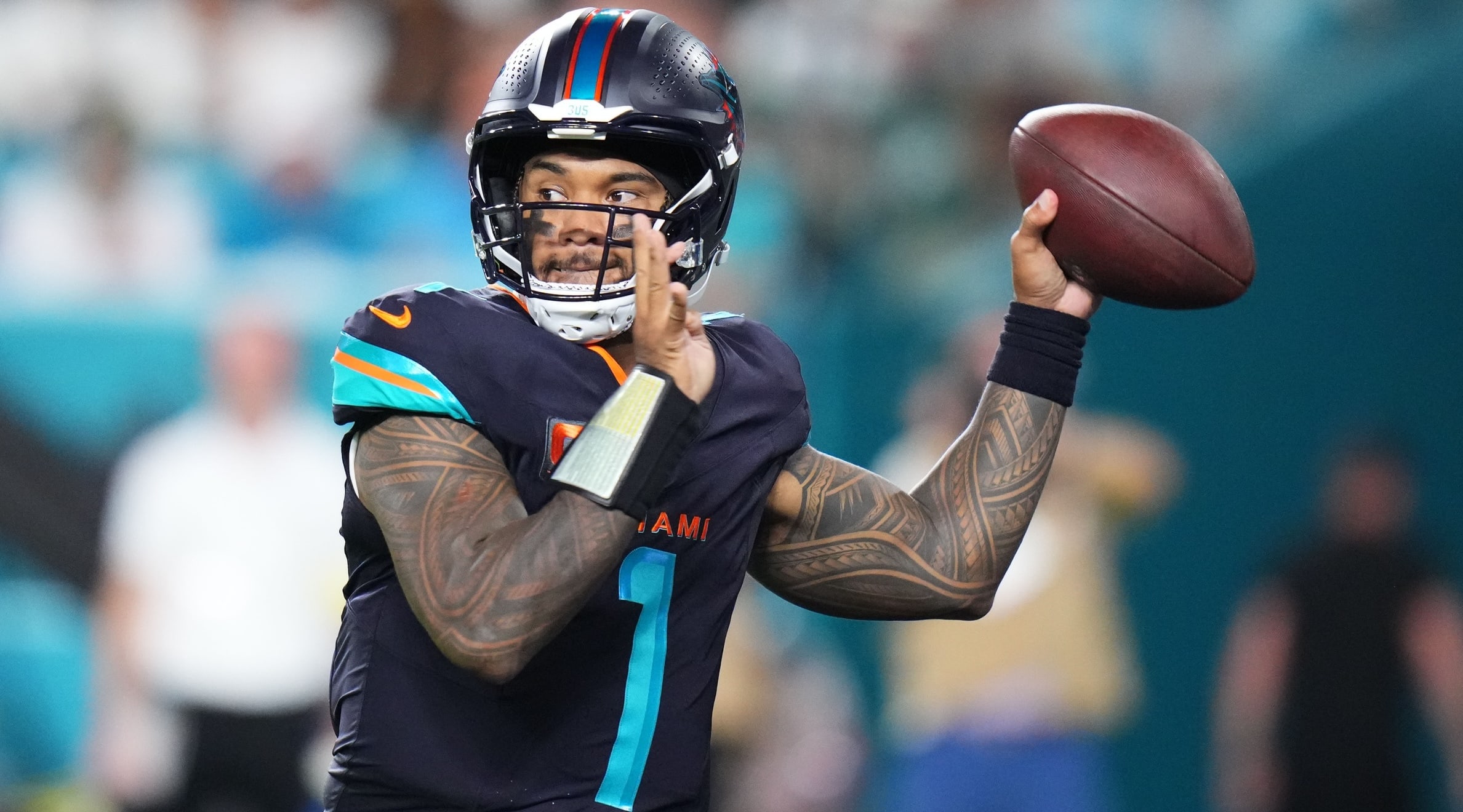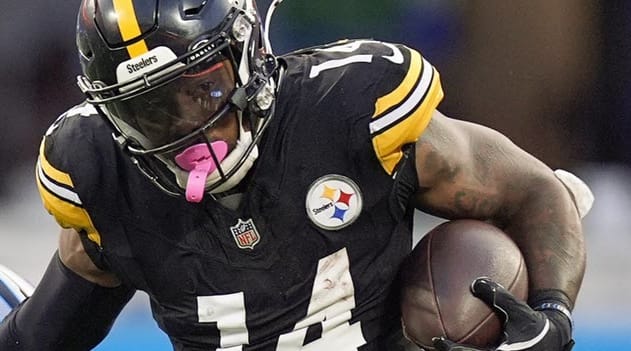The NFL is back and the injuries are already piling up. Let's take a quick look around the league at the ailments influencing fantasy draft position.
Easily the biggest name to suffer a new injury in training camp, the Bengals quarterback is expected to miss multiple weeks with a calf strain. The return to play time for muscle injuries is usually dictated by the severity of the strain. Low-grade strains are considered mild and occur when microfibers of the involved muscle or tendon are damaged. More moderate strains often receive a Grade 2 classification and occur when true fibers of the muscle or tendon are torn. As a result, Grade 2 strains are often referred to as partial or incomplete tears. Anything higher than a two is considered severe and may need surgery to repair.
Unfortunately, the severity of Burrow's injury was not released. A strain somewhere between a Grade 1 or Grade 2 seems the most likely scenario based on the expectations that he will miss multiple weeks. Fortunately, the timing of the injury should give Burrow a big enough window to recover in time for Week 1.
However, my concern is more focused on Burrow's long-term health and availability. While the recurrence rate in hamstrings and quadriceps strains is higher than calf injuries, Burrow's inherent injury risk will be elevated to begin the year. It's also worth mentioning that Burrow was wearing a sleeve on his right calf when he suffered this strain, suggesting he may
The NFL is back and the injuries are already piling up. Let's take a quick look around the league at the ailments influencing fantasy draft position.
Easily the biggest name to suffer a new injury in training camp, the Bengals quarterback is expected to miss multiple weeks with a calf strain. The return to play time for muscle injuries is usually dictated by the severity of the strain. Low-grade strains are considered mild and occur when microfibers of the involved muscle or tendon are damaged. More moderate strains often receive a Grade 2 classification and occur when true fibers of the muscle or tendon are torn. As a result, Grade 2 strains are often referred to as partial or incomplete tears. Anything higher than a two is considered severe and may need surgery to repair.
Unfortunately, the severity of Burrow's injury was not released. A strain somewhere between a Grade 1 or Grade 2 seems the most likely scenario based on the expectations that he will miss multiple weeks. Fortunately, the timing of the injury should give Burrow a big enough window to recover in time for Week 1.
However, my concern is more focused on Burrow's long-term health and availability. While the recurrence rate in hamstrings and quadriceps strains is higher than calf injuries, Burrow's inherent injury risk will be elevated to begin the year. It's also worth mentioning that Burrow was wearing a sleeve on his right calf when he suffered this strain, suggesting he may have already been dealing with a mild injury to the muscle complex. That risk will need to be factored into his ADP and should drop him out of the top five quarterbacks. He could still be a valuable fantasy investment for opportunistic managers, but Burrow is no longer a no-brainer addition.
Javonte Williams and Breece Hall
Both AFC running backs missed more than half of last season after tearing an anterior cruciate ligament (ACL) in one of their knees. Now the duo is hoping to put the respective injuries in the rear-view and be active in Week 1.
Superficially, Williams appears to be in a better spot than Hall. His injury occurred three weeks earlier than the Jets running back's injury. He's avoided the PUP list, and the Broncos recently revealed Williams is expected to see action in the preseason. But I can't shake a feeling of lingering concern. My primary fears are linked to the complexity of the injury. as Williams' injury was more complicated than Hall's. In addition to his torn ACL, Williams also tore his lateral collateral ligament (LCL) and the posterolateral corner (PLC) of his knee capsule in Week 4 of the 2022 season. This is a complex injury, especially the PLC aspect. Multiple muscles, ligaments and tendons are located at or near the PLC, including the calf, hamstring and iliotibial band (ITB). As a result, the area is crucial in the overall integrity of the knee joint, and Williams would likely need more time to heal than if this were an isolated ACL tear. A secondary injury somewhere else along the kinetic chain also appears more plausible.
Despite my concerns, Williams could still be available for Week 1. However, investing here remains a calculated gamble. If you do roll the dice on Williams, appropriately adjust your outlook for the first few weeks and hope he joins players like Adrian Peterson or Jamaal Charles who defied expectations and expected productivity following ACL injuries.
I'm bit more bullish on Hall even though he started training camp on the active/PUP list. He's a tad younger than Williams, and his ACL injury was more straightforward, two considerable factors when evaluating return to play. Furthermore, the early PUP designation may be used to protect Hall from himself in the latter stages of recovery and put him in a better place to start the season. Even if he does begin the year on the PUP and is forced to miss the first four games, I think Hall could be a matchup changer as the season progresses. New York's continued flirtation with veteran running backs, mainly Dalvin Cook, is worth monitoring. However, the addition of another capable backfield mate could help Hall manage his weekly workload and help his continuing availability and productivity.
Turf Burns
Cooper Kupp: The Rams are listing Kupp as day-to-day despite reports that he would miss multiple weeks after straining his hamstring in practice last week. Kupp's age plays a small factor here, and his chances of an aggravation or reinjury will be a bit higher than other wideouts with a similar injury profile. However, there is enough time for Kupp to adequately rest and recuperate, and this shouldn't drastically affect his draft day stock.
Kyle Pitts: The Falcons tight end was a disappointment for many last season, as Pitts failed to build on an impressive rookie season due to poor productivity and injury. After a hamstring strain earlier in the season, Pitts missed Atlanta's final six games with a high-grade medial collateral ligament (MCL) sprain that ultimately needed surgery. The growing injury history is enough to raise at least one red flag of concern, and I would feel more comfortable if we could see Pitts on the practice field getting reps with Desmond Ridder. However, Atlanta appears content to slow-play things here, and Pitts will enter most fantasy drafts with an elevated degree of risk.
Kadarius Toney: The Chiefs are optimistic that Toney will be ready for Week 1 even though the receiver underwent knee surgery just days into training camp. The surgery was needed to "clean up" a partial torn meniscus in his knee. The terms "clean up" and the quick recovery window suggest Toney underwent a meniscectomy, a procedure in which the damaged meniscus is removed rather than repaired. With the damaged tissue excised, Toney can return to play after the postsurgery symptoms have subsided and no functional limitations remain. It does come at the cost of an increased chance of future issues in the knee, a growing concern for a player with a history of lower extremity injuries and at least one other knee surgery. Tread cautiously here despite the optimism.
Garrett Wilson: The Jets receiver remains out with a low-grade ankle sprain sustained on July 27. However, this appears to be a situation where the team is handling things conservatively to ensure his long-term health. Look for Wilson to return sometime this week when the Jets take part in joint practices with Carolina.








